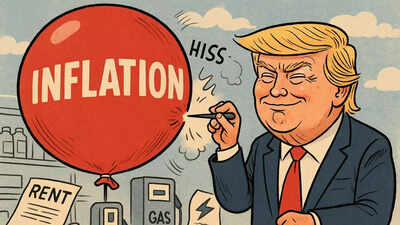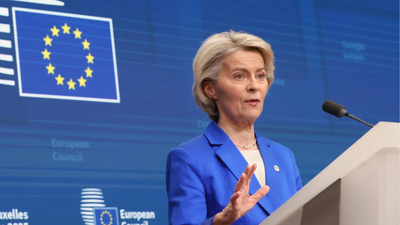US inflation slows in September — what it means for you | Business

For almost two years, prices in the United States have been climbing faster than most people’s paychecks. Groceries, rent, fuel, and electricity all went up, squeezing budgets and forcing families to cut back. Now there’s finally a bit of good news: inflation is slowing. Prices in September rose 3% compared to a year earlier, a little less than what experts had expected.That may sound like a small change, but it matters. It suggests that the wave of high prices that began during the pandemic could finally be losing strength. For Americans, it might mean cheaper loans and a little more stability in household budgets. For the rest of the world, including India, it’s a sign that the global economy may be settling after years of turmoil.Still, prices are not falling, only rising more slowly. Inflation remains above what the US Federal Reserve considers healthy, so the question now is whether this slowdown will last long enough for the Fed to start cutting interest rates.
The big picture
In September 2025, prices in the US went up 3% from a year earlier, slightly below forecasts of 3.1%. On a month-to-month basis, they rose about 0.3%. Core inflation, which leaves out food and fuel, stayed steady at around 3%.Inflation has come a long way down from its pandemic peak of over 8%, but it’s still higher than the Fed’s goal of around 2%. The latest numbers show progress but also caution: the fight against rising prices is slowing, not over.
Why it matters
Loans and EMIs: If inflation keeps easing, the Fed may cut interest rates soon. That could make home loans, car loans, and business borrowing cheaper.Savings: When inflation slows, your money holds its value better, so you can buy more with the same amount.Everyday life: Lower prices can boost spending, helping shops, companies, and jobs.Around the world: The US is the world’s biggest economy. When its inflation changes, it affects currencies, trade, and commodity prices everywhere — including India.
What happened
The inflation report for September came out later than usual because of a short government shutdown. When it was finally released, it showed prices rising a little less than expected.Earlier forecasts had suggested that tariffs on imports and high energy costs might push prices up again. But both stabilised, and that helped keep inflation in check.
Background
After the pandemic, supply chains broke down and goods became scarce. At the same time, governments pumped money into the economy to keep people afloat. The result was a sharp jump in prices across almost everything.By 2022, inflation in the US was above 8%. To slow it, the Fed raised interest rates, which made loans costlier and cooled spending. That strategy worked: inflation dropped through 2023 and 2024.By mid-2025, inflation had settled near 2.7%, but new import taxes and rising service costs caused a small rebound. Now, it seems to be easing again. Some economists think 3% could become the “new normal” — slightly higher than before the pandemic, but stable enough for steady growth.
What to watch next
Fed meeting this month: The central bank will decide whether to cut interest rates or wait for more data.Jobs and spending reports: If job growth slows and people spend less, rate cuts become more likely.Trade and tariffs: New import taxes could still make certain goods costlier.Global trends: Other big economies are also seeing around 3% inflation, which could shape trade and investment patterns.
Why “inflation slows” doesn’t mean “crisis over”
It’s encouraging that inflation is cooling, but it’s not over yet. Prices are still rising, just not as quickly. Everyday costs like rent, healthcare, and groceries remain high for many families. And inflation could climb again if oil prices or tariffs rise.In short, inflation slowing is a relief, not a rescue.
The bottom line
Inflation at 3% shows progress, not perfection. The US has avoided the runaway prices of the pandemic years, but stability is still some distance away.The Fed’s next move — whether to cut or hold rates — will decide how quickly the world’s biggest economy regains its balance. For now, things are moving in the right direction. If this trend continues, cheaper loans and steadier prices could soon follow.






